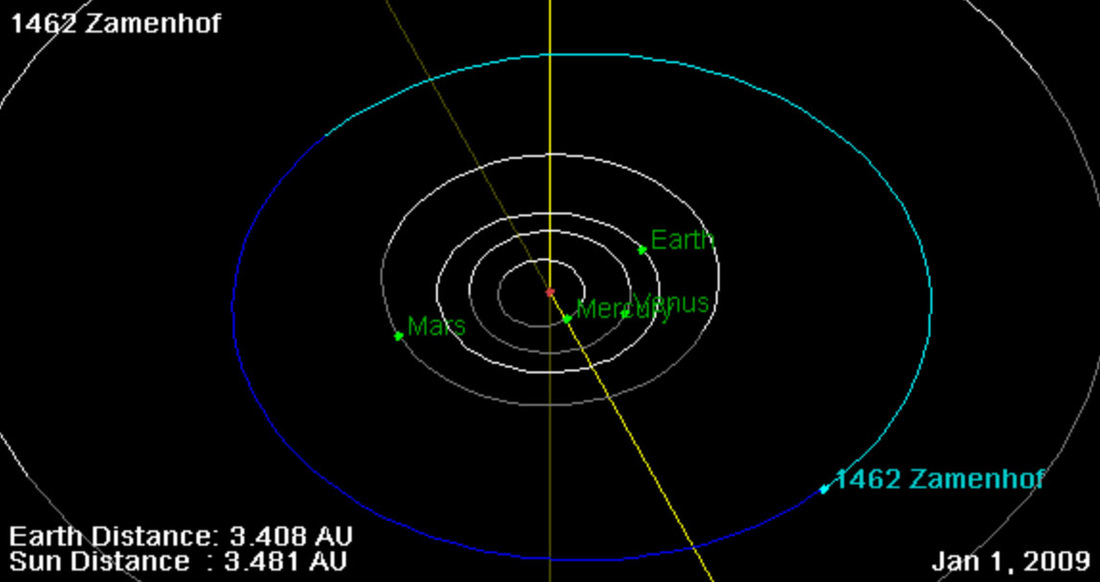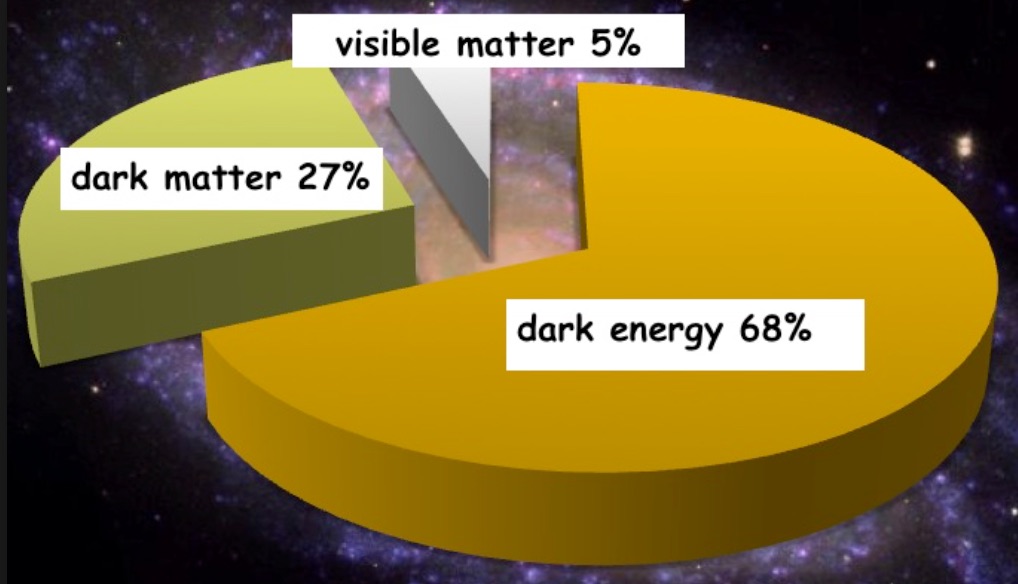|
Copyright R. Zamenhof, 2013.
An asteroid designated 1462-Zamenhof is named after Ludwig Lazarus Zamenhof, the inventor of the artificial language Esperanto ("hope"), who happens to be the great-uncle of the author. This picture has absolutely nothing to do with dark matter, but is just an opening for the author to brag a little about his ancestor! Introduction
Astrophysicists have hypothesized the presence of so-called dark matter in the universe because of discrepancies between the calculated mass of large astronomical objects (galaxies, stars, etc.), as determined from their gravitational effects on the rotation of neighboring astronomical objects, vs. their mass calculated from the “luminous matter” they contain (primarily gas and dust). One somewhat exotic theory suggests the existence of a hidden valley, a parallel world made of dark matter, having very little in common with matter we know, that can only interact with our visible universe through gravity! Many experiments to detect proposed dark matter particles through non-gravitational means are under way. The Discovery of Dark Matter The first scientist to postulate the presence of dark matter based upon reliable scientific evidence was Vera Rubin in the 1960s and 1970s. Rubin calculated the mass of galaxies based on their observed rotations, and also based on the luminous matter they contained. There were significant inconsistencies in the masses calculated by these two approaches, which led Rubin to calculate and hypothesize a yet unidentified presence of additional mass in the universe that would enable the results obtained by these two calculation approaches to agree. This “excess” mass was termed dark matter and is now believed to constitute approximately 85% of the mass of the universe. Uncertainties about Dark Matter Predictions As with any theory, there are some observations that do not agree with the predictions of dark matter as described above. For example, astrophysicists looking in the volume of space around our own sun have been unable to predict the excess gravitational force that the presence of dark matter should produce. Although the existence of dark matter is now generally accepted by the mainstream scientific community, some alternative theories of gravity have been proposed which try to account for the anomalous observations without requiring additional matter. However, these theories cannot account for the gravitational observations in galaxy clusters. Related Concepts – Dark Energy There is also still unverified energy present throughout the universe called dark energy. Dark energy is believed to be the unseen influence in the universe that is causing the expansion of the universe to accelerate with time. Without the postulation of dark energy, astrophysical calculations in fact suggest that there is a reduction in the rate at which the universe is expanding with time; but astrophysical observations all indicate an acceleration of expansion with time, so dark energy is the additional energy that must be invoked in the model of the universe to support the physics observations. Adding the mass-equivalent of the predicted dark energy to the calculated mass of dark matter, it is estimated that over 95% of the mass of the universe is a combination of dark matter and the mass-equivalent of dark energy. The Composition of Dark Matter Dark matter is believed to be composed of weakly interacting massive particles called neutralinos that interact only through gravity and the nuclear weak force. Alternative explanations have been proposed, but there is not yet sufficient experimental evidence to determine whether any of them is correct. Summary Dark matter is a form of invisible mass that pervades the universe. It is believed to be composed of neutralinos, yet undetected elementary particles predicted by supersymmetry theory. Approximately 85% of the mass of the universe is believed to constitute dark matter, an inference drawn from the discrepancy between gravitational observations vs. gravitational effects calculated on the basis of visible matter. There is also predicted but still undetected energy present throughout the universe called dark energy, which is an additional energy postulated to exist in the universe to resolve the disagreement between astrophysical calculations, which suggest a universe that is expanding but at a slower rate with time and physical observations that suggest the expansion to be accelerating with time. Adding the mass-equivalent of this predicted dark energy to the mass of dark matter in the universe, it is estimated that over 95% of the mass-equivalent of the universe is due to the sum of dark matter and dark energy (see the second picture above). Dark matter plays a central role in modeling of cosmic structure formation and galaxy formation and evolution and has measurable effects on the anisotropies observed in our cosmic microwave background. All these lines of evidence suggest that galaxies, clusters of galaxies, and the universe as a whole contain far more matter than is inferred through “visible” means. Further knowledge of dark matter and dark energy would add greatly to the understanding of the creation of elementary particles in the universe within a second or less following the big bang. Hmm, seems like a giant astrophysics error that physicists are now trying to reconcile. Good thing the humanities are not that uncertain ... |
About the Author Archives |
Live Chat Support
×
Connecting

You:
::content::
::agent_name::
::content::
::content::
::content::



 RSS Feed
RSS Feed